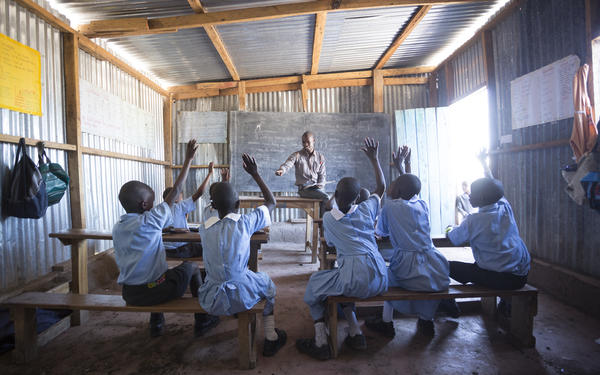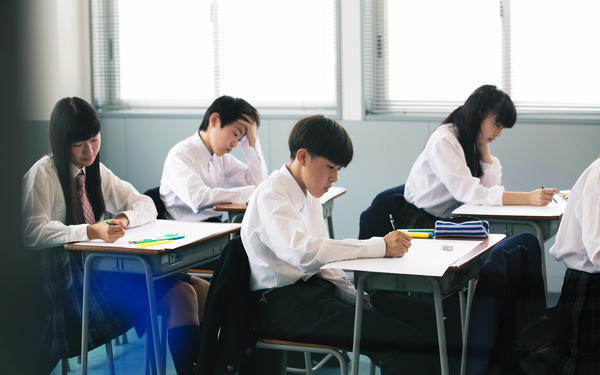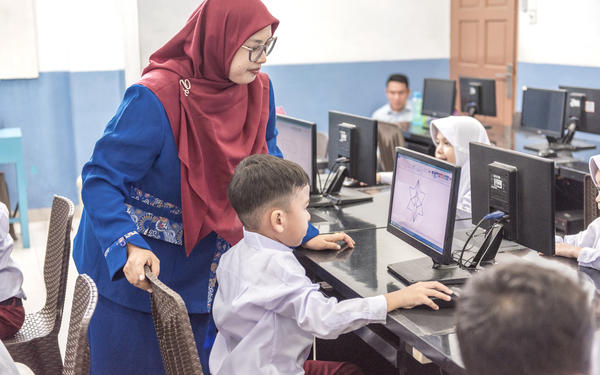Covid’s impact on education: what new challenges has it created?
For International Day of Education, Dominique Slade, Head of Education Content & Solutions at Cambridge Partnership for Education, considers the challenges more than two years since the start of the Covid pandemic.
This is the second of three posts analysing the impact of Covid on education delivery. Dominique’s first post considered learnings since the start of the pandemic.

With the growing number of issues facing the world today, including global recession, one of the key challenges for governments and donor agencies will be to allocate budgets for competing priorities, from immediate emergency relief to longer-term investment in the future, including education.
The Education Finance Watch 2022, a joint publication by the World Bank, the Global Education Monitoring Report and the UNESCO Institute of Statistics, provides an annual analysis of trends and issues in education financing around the world. It highlights the worrying trend that 40% of low- and lower-middle income countries reduced their spending on education in 2020 following the onset of COVID-19.
This trend means there is an increased risk that these countries will struggle to implement actions to address learning loss and pre-existing learning poverty.
By contrast, the trend observed in upper-middle income and high-income countries shows that education remained stable as a share of total government budget and, in 2022, was higher than prior to the pandemic.
The impact of these opposite trends, combined with the decline in aid to education by some major aid contributors – such as the UK, US and KSA – and global donors, clearly highlights that keeping education on top of governments’ and donors’ priorities is going to be a challenge.
Keeping education on top of governments’ and donors’ priorities is going to be a challenge.
This is reflected in the theme of this year’s International Day of Education: to invest in people, prioritise education, as well as the Transforming Education Summit in September 2022, which focused on generating global debate around the role of education as a common good:
“Education is key to charting the course towards more justice and sustainability... The COVID-19 pandemic has exacerbated a pre-existing education crisis. Reliance on digital technology for learning has deepened exclusion and gender inequalities. Without remedial action, better support for teachers and increased financing, learning losses and school dropout will continue to rise, reversing progress towards all the Sustainable Development Goals and depriving the youth of a future of dignity and opportunity.”

Addressing learning inequalities to improve education for all
An important lesson learned from the pandemic is that governments should focus their efforts on reducing inequalities in educational attainment as a priority and realise that this makes sense at all levels – educational, socio-economic and ethical.
It can be counter-intuitive for governments with a remit of providing quality education for all to be convinced that focusing on the most vulnerable first will drive improvement for all, particularly as providing support for the most vulnerable learners is, by nature, more complex and expensive, therefore it is rarely prioritised in countries with limited and competing resources.
However, as well as the lessons learned from the devastating, unequal impact of the pandemic on different groups of learners and the resulting potential impact on countries’ human capital and overall levels of poverty, educational research also provides evidence that starting education reform by addressing the needs of the most vulnerable groups first makes educational and financial sense, particularly in low- and middle-income countries.
Starting education reform by addressing the needs of the most vulnerable groups first makes educational and financial sense.
In 2018, a policy paper entitled ‘Cost-effectiveness with equity: Raising learning for marginalised girls through CAMFED’s programme in Tanzania’, published by the REAL Centre (Centre for Research for Equitable Access and Learning, University of Cambridge)
and based on CAMFED (Campaign for Female Education) data, concluded that – despite the higher cost to reach the most marginalised children – the impact per dollar spent provided greater value for money in terms of learner outcomes.
The overall conclusion of the research was that, ultimately, ‘inclusive education systems will function for everyone if they function for the most marginalised.’ Getting this message across is likely to be a challenge in times of reduced resources, but with the support and agency of individuals such as Jaime Saavedra, global events such as the International Day of Education and the Transforming Education Summit, and the growing evidence provided in many international reports on the state of education – as mentioned in part one of this series – this message will hopefully gain momentum.

Understanding the potential and limits of technology
The past two and a half years have provided a truly unique global, real-life experiment in remote education, highlighting both the potential and the limits of technology in addressing access to quality education.
With school closures in practically every country in the world at the peak of the global pandemic in early 2020, governments had to find solutions to ensure access to education, using a wide range of different solutions incorporating both old (e.g. radio, television) and new technologies (e.g. digital platforms, social media).
The scale and range of initiatives, implemented over varying periods of time in varying contexts, have provided a unique insight into understanding what works and doesn’t work when trying to implement the use of technology as a substitute to schools at system-level.
The World Bank has carried out one of the most comprehensive analyses of the lessons learned about remote learning during the pandemic, published in two separate and complementary reports, ‘Remote Learning During the Global School Lockdown: Multi-Country Lessons’ and ‘Remote Learning During COVID-19: Lessons from Today, Principles for Tomorrow’.
The two reports were developed at different points in the pandemic, with a strong focus on understanding the effectiveness of the different solutions adopted across the world, trying to answer the simple question: did children learn as much as they would have done in school? They also aimed to establish some principles to support policy makers at the point of reopening schools and preparing education systems for the future.
The most important lesson learned from the use of technology in education during the pandemic is that remote learning is a poor substitute for in-person learning and that new
technologies, while they can be effective when used by skilled teachers who have access to and an understanding of them, have exacerbated pre-existing inequalities in many instances: ‘What once was a digital divide for some is now a digital chasm for many.’
Looking to the future, one of the main challenges for governments will be to make decisions that ensure the long-term resilience of their education systems, while at the same time
improving their effectiveness, equity and sustainability. This will inevitably involve making complex and expensive decisions around the use of technology, with a minefield of potential risks such as wasting public money and/or increasing inequalities.
Lessons learned during the pandemic about what has or has not worked in a range of different contexts should help to inform these decisions.

Rethinking the essential role of schools in the age of new technologies
The increased use of technology in education is the acceleration of a trend that started long before the pandemic, slowly and often reluctantly reflecting the evolution of the use of new technologies in all aspects of society, from the world of work and industry to the world of entertainment.
While evidence from the pandemic has shown that remote education and the use of technology are poor substitutes for face-to-face education, it is similarly clear that most education systems are looking at new technologies to strengthen their resilience in the face of a potential increase in global challenges in the future.
Most education systems are looking at new technologies to strengthen their resilience in the face of a potential increase in global challenges in the future.
Over 20 years ago, the OECD Centre for Educational Research and Innovation tried to imagine what schooling could look like in the future by developing six scenarios based on global trends in education, such as ‘the expansion of learning markets and the growing role of digital technologies in connecting people, as well as their impact on the personalisation of learning’.
Repeating a similar exercise in 2022, the scenarios are reduced to four:

This useful exercise provides a starting point to reflect on more fundamental questions such as: what is the role of schools in the age of new technologies? How will schools deliver for the future, while at the same time addressing increasing pre-pandemic issues such as learning poverty and learning inequalities? In what way can new technologies contribute to addressing these challenges at school- and system-level?
Carefully considering these questions before embarking on full-scale, potentially disruptive educational reforms will be one of the main challenges for education systems in the future.
In her next post on the impact of Covid on education, Dominique will consider opportunities for the future of education.
If you’d like to discuss how we at Cambridge can help you tackle your unique challenges in education delivery then please contact us.
This blog draws from our report: Covid's impact on education after more than two years.
